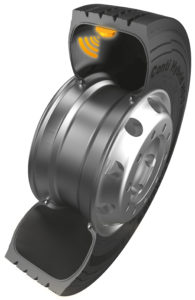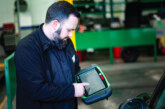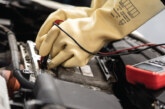Extending tyre lifetime is vital for reducing downtime and keeping costs down for operators. Here, Continental Tyres offers some top tips on how to do so.
Continental Tyres’ expertise doesn’t just stop at manufacturing premium products, says the company.
With tyres influencing approximately 40% of operating costs for commercial vehicles, Continental also offers a range of additional solutions to help operators achieve the lowest overall driving cost for their fleets.
ContiFitmentService ensures operators make the right tyre choice, while premium regrooving and retreading services focus on extending the life and mileage of tyres.
The ContiPressureCheck tyre pressure monitoring system (TPMS) allows operators to improve fuel efficiency, while ContiBreakdownService minimises downtime in the event of tyre failures. The team also has some crucial guidelines for operators to help them get the most from their tyres:
❶
TYRE SELECTION
The right advice helps fleets to select the best tyre for their individual needs. Operating costs can vary greatly depending on the tyre used. Tyres with optimum efficiency and reliability will improve tyre life, as well as fuel costs.
❷
INFLATION PRESSURE
Incorrect tyre pressure is one of the greatest causes of excessive tyre wear and leads to irregular wear patterns. This reduces performance and fuel efficiency, decreasing the tyre’s life and increasing running costs.

Under-inflation causes increased flexing and heat build-up, consequently damaging the tyre. Running tyres below optimum pressure also increases fuel consumption and has a negative impact on the environment – just 20% under-inflation can increase fuel consumption by up to 3%.
Overinflation, on the other hand, makes the tyre more vulnerable to cuts and shock damage. The optimum air pressure gives tyres the precise shape for slow and even wear. If tyres are constantly 20% under- or over-inflated, this could decrease tyre life by up to 30%.
Fleet operators should ensure tyres are checked once every 14 days or 2,000 miles, and that they are checked when cold with an accurately calibrated tyre pressure gauge. A vehicle should never have different pressures across an axle.
TPMS helps to maintain the correct pressure, as sensors fitted within the tyres provide more accurate information on their condition.

❸
REGROOVING AND RETREADING
Regrooving extends the mileage of the tyres and help manage costs, and to make life easier, most modern truck tyres are now designed to be regrooved. To ensure casings are not damaged, regrooving
should be carried out when the tyre tread depth reaches 3mm.
Regrooving can extend a tyre’s life by 20 to 30%. Once the new tyre has worn to the point of removal, only 20% of the original material has been used. All ContiRe tyres are ‘bead to bead’ retreads, meaning that both the tread and sidewall rubber are replaced. The tyre looks as new and the cost is significantly lower than that of a new tyre, while 95% of the original tyre’s performance is maintained.
Retreading also offers substantial environmental benefits. Every ContiRe uses just 80% of the raw materials needed to manufacture a new tyre and saves 68L of oil, 44kg of rubber and 182.24kg of CO2.
❹
TYRE CARE
Steer axle tyres often wear more on the outer shoulder. Once the difference between the inside and outside tread groove is greater than 4mm, a tyre service provider should turn the tyre on the rim to extend its life. The diameter of twin tyres must be as near equal as possible. Tyres with a difference in diameter of more than 5mm will experience irregular wear.
Tyres should be checked on a daily basis to detect safety or durability issues. Issues include punctures, cuts, foreign objects and distortion. Cracks or bulges may suggest that the tyre components have separated.
❺
IRREGULAR WEAR
The tyre tread must be continuously monitored for signs of irregular wear. This is caused by factors such as maintenance, road hazards, wheel alignment and weather conditions. The type of irregular wear will
provide a clue to its cause. TPMS constantly monitors tyre pressure to avoid irregular wear caused by under- or over-inflation.
❻
TYRE REPAIRS
Damaged tyres must be inspected by a tyre expert before any repairs tak place. Tyre service providers can decide if the tyre should be repaired and whether it would be safe to use after repair.

❼
BREAKDOWN COVER
In the event of tyre failure, ContiBreakdownService minimises downtime. This Europe-wide service is
available 24 hours, 365 days a year, and the Conti360° hotline provides immediate assistance in the relevant language. Continental covers a large number of European countries, with maximum downtime guarantees of either three or four hours.









